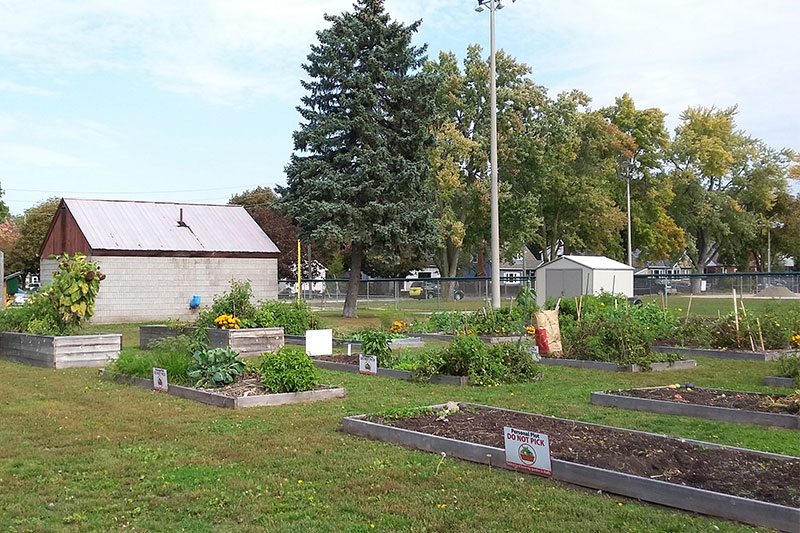Eat more plants as part of your climate-change diet, Barrie group urges

Barrie Community Garden
By Barrie Today
Living Green Barrie urges people to start a garden, eat more plants
This year, many of us have looked to our own backyard for opportunities to get outside, be active, and reduce screen time. You may have been part of the more than 50 percent of Canadians who started a vegetable garden during the pandemic, looking for some peace of mind or maybe the satisfaction of nurturing a tiny seed or seedling.
Including more vegetables in our diet can lower blood pressure, fight disease, and slow the aging process, but can eating more vegetables also help reset the clock on climate change for our planet? Here are a few things that can happen when you replace animal products and add more vegetables:
Get less gassy
Raising livestock accounts for approximately 14.5 percent of total global greenhouse gas emissions. Most of this comes from the work required to feed and process animals for food. Almost as much is produced from the animals’ waste and digestive process, particularly from beef and dairy cattle.
Researchers are looking at ways to make livestock production less gassy and more sustainable through genetics and dietary supplements, like seaweed, but while this approach is thought to hold promise, there are still hurdles to this solution being widely adopted.
Save the trees
Clearing large areas of forest to create or expand pastures for livestock not only reduces the planet’s ability to take in carbon dioxide, but can contribute carbon into the atmosphere and increase warming when the carbon that is trapped in the soil is released as a result of soil disturbance and erosion from the loss of vegetation cover and increased grazing pressure.
A forest can reduce stormwater runoff and trap greenhouse gases from the atmosphere. Even your backyard and boulevard trees do their part. A mature tree absorbs carbon dioxide at a rate of 48 pounds per year. In one year, an acre of forest can absorb twice the CO2 produced by the average car’s annual mileage.
According to the 2019 UN Intergovernmental Panel on Climate Change report, “Dietary changes, featuring plant-based foods and sustainable animal-sourced food, could free up several million square kilometers of land by 2050 and potentially cut 0.7 to 8.0 gigatonnes a year of carbon dioxide equivalent.”
The report also noted, “Reducing deforestation and forest degradation could result in a reduction of 0.4-5.8 gigatonnes of CO2 equivalent.”
A gigatonne is one billion metric tonnes. One gigatonne is roughly 200 million elephants — enough to stretch from the Earth to the moon.
Trap carbon by growing your own vegetables and nurturing your soil
Growing your own vegetables in a climate-friendly garden can trap carbon in the plants and soils and provide a hyper-local source of veggies without traveling on a truck to get to your table. A climate-friendly garden minimizes the disturbance to soils through no-till or no-dig practices and enriches the soil by utilizing compost instead of chemical inputs.
Save money
Meat is one of the most expensive things at the grocery store. Taking it off your list could save you some money if you replace it with vegetables and plant-based proteins like beans and legumes that can act as substitutes for meat. The amount you save will depend on whether you are prepared to include these less expensive options in your meals or if you rely more on the pre-packaged vegetarian and vegan alternatives.
Our choices can help reduce greenhouse gas emissions and limit human-induced global warming. We have all been told to eat our vegetables because they’re good for us. It turns out it’s also good for our planet.
See original article here









Leave a Reply